An acronym dating to the Roman Republic that refers to "The Senate and People of Rome," SPQR was later co-opted by Benito Mussolini and white supremacists.
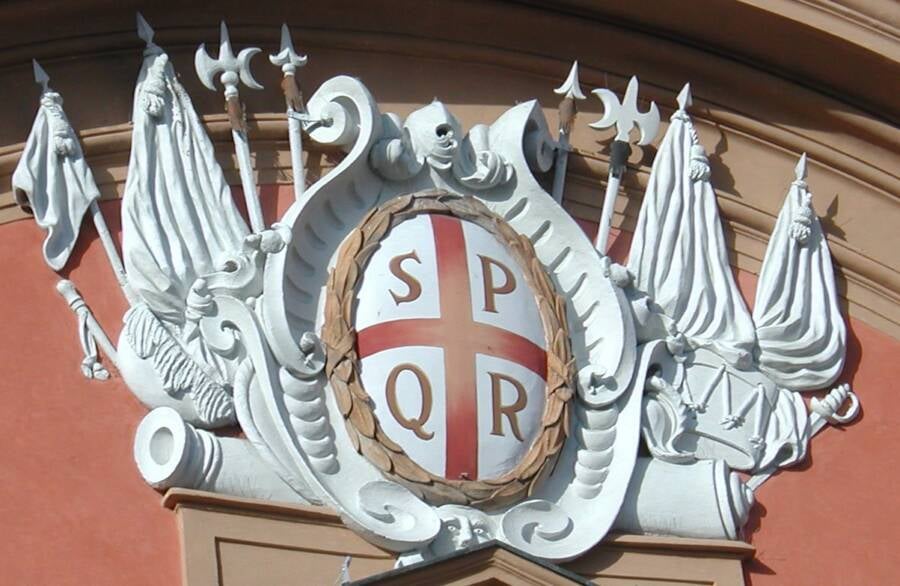
Wikimedia CommonsThe acronym SPQR, depicted in the coat of arms of Reggio Emilia in Italy.
“The Senate and Roman People” or “The Senate and People of Rome” was a phrase that once represented the essence of the Roman Republic’s political system. In Latin, the phrase was “Senatus Populusque Romanus,” which was often abbreviated simply as “SPQR.” It was meant to define the republic’s constitution, emphasizing a balance of power between the Senate and the Roman people.
Over time, however, the meaning of SPQR has changed. It was infamously repurposed in the early 20th century, thanks to Benito Mussolini, the leader of Italy’s National Fascist Party. Mussolini frequently used “SPQR” to invoke comparisons between the glories of ancient Rome and his own regime, as part of a vision for what he called the “New Roman Empire.”
More recently, SPQR’s meaning has once again been repurposed, this time by white supremacists and white nationalists. Some of these extremists see the phrase as a symbol of authority and power, using it to promote ideas of racial “purity” and white supremacy — a gross misrepresentation of both the original meaning and the diverse, multicultural society of ancient Rome.
But understanding the historical context of SPQR and why the misinterpretation of its original meaning is truly ironic is also key to combating the racist ideas that it has come to be associated with.
The Original Meaning Of SPQR In Ancient Rome
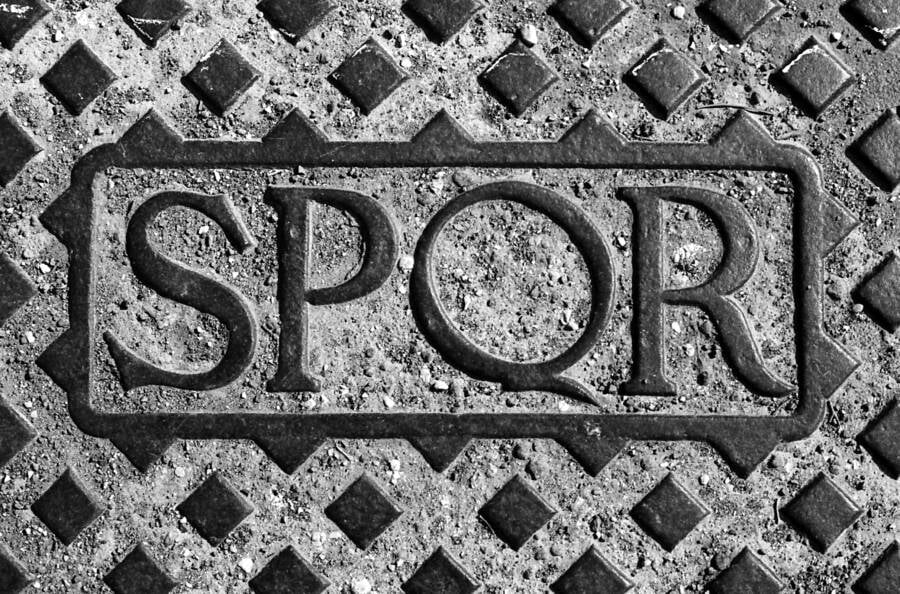
Wikimedia CommonsSPQR on a manhole cover in Rome.
The core meaning of the original phrase “Senatus Populusque Romanus” referred directly to two of Rome’s component parts: the Senate and its people. Some might say that the phrase is somewhat similar to the United States’ original motto: “e pluribus unum,” or “out of many, one.”
It was, in many ways, meant to convey the governmental philosophy of the Roman Republic. As Hyperallergic notes, numerous important Roman figures, such as Caesar, Livy, and Augustus used SPQR during their lives, but the primary ancient source for the phrase’s widespread use came from Marcus Tullius Cicero. To Cicero, the phrase was an essential part of the constitution of the republic — the Senate and the people of Rome were two key parts of a single whole, meant to check each other’s authority.
But despite its association with the Roman Republic, historian Liv Yarrow explained that SPQR was notably absent on Republican-era coinage. There is also a lack of evidence that SPQR appeared on Roman military standards.

Wikimedia CommonsAn SPQR-related message inscribed on the Arch of Titus in Rome.
According to Yarrow, “SPQR does begin to appear on the coinage just at the moment that Augustus is trying to legitimate his own extraordinary public honors, and his claims to have ‘restored’ the republic.”
Augustus, however, was the ruler who effectively ushered in the Roman Empire — bringing an end to the Roman Republic and ruling as an emperor. Augustus invoked SPQR as a sort of propaganda tool, hearkening back to an earlier time (which promoted more equality) to advance his own regime.
Constantine tried the same tactic around the fourth century C.E., although the phrase had already fallen out of favor by the late Imperial period. During the high medieval period, the phrase re-emerged, and even though it was once again used to manipulate agendas, it never seemed to be associated with just one cause for long. What this shows is that SPQR was often used and repurposed for various reasons throughout history, the original meaning only ever hinted at or used for manipulation.
As historian Carrie E. Beneš explained to Hyperallergic: “The acronym retained a sense of authority even as it ceased to make literal sense, and that fact was exploited in the Middle Ages by pretty much everyone who wanted to channel and lay claim to the authority of ancient Rome: the Roman commune, the papacy, the Roman emperors (who were actually German, but that didn’t stop them), and so on.”
It was this same essential playbook that Benito Mussolini adopted in the 1920s to gain support for his authoritarian takeover of Italy.
The Rise Of Benito Mussolini — And The Use Of SPQR As A Fascist Dog Whistle
In the late 1910s and early 1920s, Benito Mussolini’s following quickly began to grow. As the leader of Italy’s National Fascist Party, Mussolini claimed to have a desire to restore Italy to the glory of the Roman Empire. He admired ancient rulers like Augustus, who was known for his great power (and for bragging about his positive impact on Rome even on his deathbed).
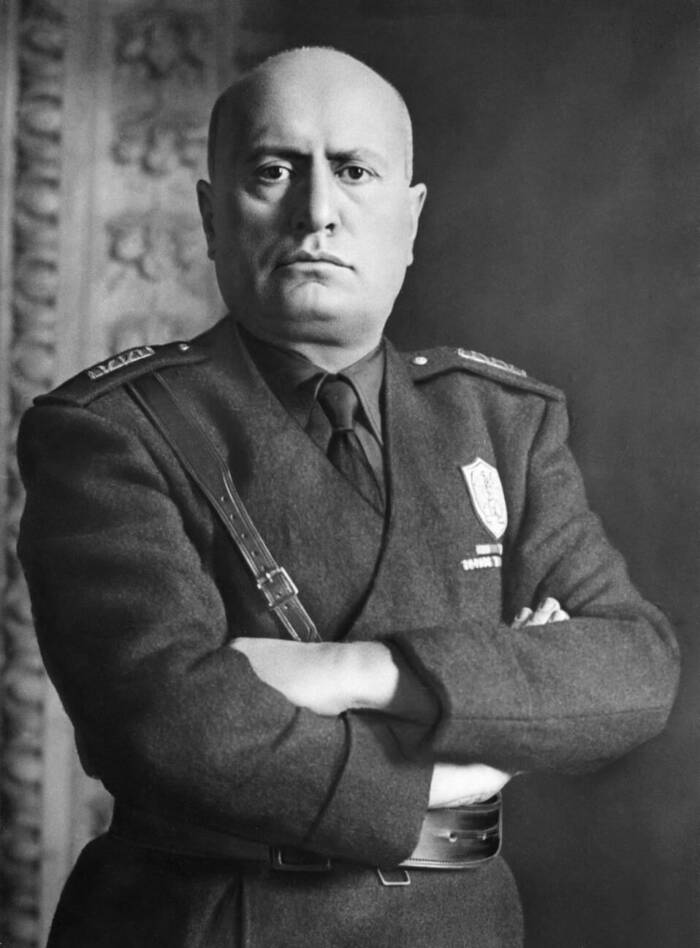
Wikimedia CommonsBenito Mussolini, the fascist Italian dictator known as “Il Duce” (or “The Leader”).
Like Augustus, Mussolini emblazoned “SPQR” on basically anything he could: public edifices, infrastructure, and even manhole covers. The purpose was deliberate — as dictator, he wanted to show that he was the rightful heir to build a “new” Roman Empire. Mussolini used the phrase as a way to legitimize his authority in the eyes of the Italian people.
Of course, Mussolini’s regime was just the latest in a long line of manipulators who invoked the symbolism of ancient Rome to push an agenda. His use of SPQR overlooked the complexities of the phrase’s history and the previous elements of Roman governance in favor of his dictatorship.
Under Mussolini, there was no chance of any form of democracy.
Mussolini ultimately failed in establishing a new Roman Empire, his rule ending when he was overthrown in 1943. But his use of SPQR as a means of spreading authoritarian rhetoric was hardly the last time it happened — and more recent examples are representative of a disturbing trend.
The New Meaning Of SPQR In Recent Years — A Rallying Cry For White Supremacy
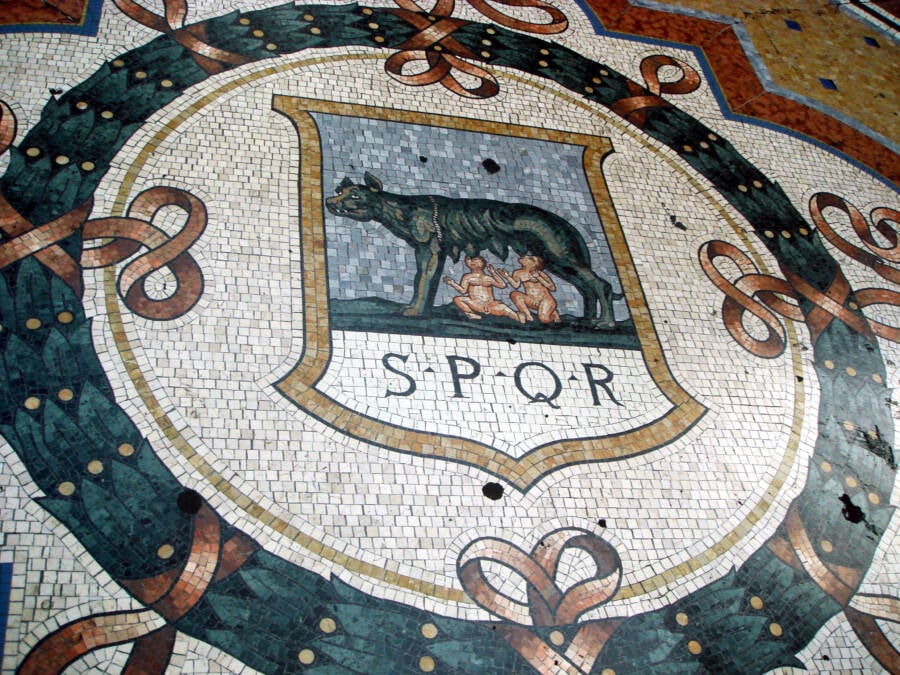
Wikimedia CommonsSPQR on a floor mosaic in Milan.
In recent years, some white supremacist organizations and white nationalist groups have adopted SPQR to symbolize their ideologies. Like extremist factions of the past, this usage misappropriates the acronym’s original meaning in an attempt to justify morally bankrupt philosophies.
“That SPQR should reappear in our current political climate is concerning, not only because it seeks to use history to legitimate racist agendas, but because historically the phrase was used to justify autocratic, authoritarian rule,” Yarrow explained to Hyperallergic.
The website Pharos was among the first to note this modern trend, back in 2018. The site also gained substantial attention in 2020 during the congressional campaign of American politician Madison Cawthorn, whose real estate investment company was named “SPQR Holdings.”
Pharos’ director noted at the time: “Cawthorn had also signaled his white supremacist leanings in an Instagram post showing him visiting Hitler’s vacation home, something he said had been on his ‘bucket list for awhile.'”
But Pharos reported that there were other signs of the association between SPQR and white supremacist viewpoints. Pharos also identified an online account named “ProudWhiteUK” who had asked for advice on getting a white nationalist tattoo that didn’t blatantly invoke Nazi imagery — with contributors suggesting a “Roman Legion SPQR” tattoo. There were other examples of SPQR tattoos among white nationalist groups as well, including on members of the white supremacist organization Identity Evropa.
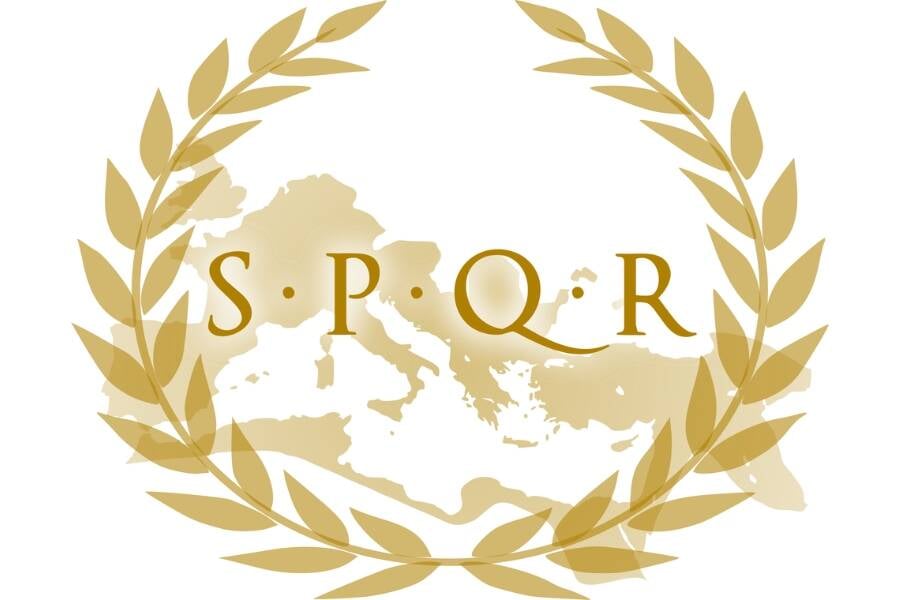
Wikimedia CommonsDespite its original meaning, SPQR today is seen by many as a symbol of white supremacy and white nationalism.
SPQR also appeared in online avatars linked to white nationalists, such as one contributor to the white supremacist site Stormfront.org, who goes by the username “SPQR Legions.” As Pharos reported, SPQR Legions sometimes offered contrarian takes on the forum — though they were never in direct opposition to white supremacist or white nationalist viewpoints. They also offered misogynistic views on women.
SPQR can also be seen plastered across flags and banners at various rallies and protests organized by hate groups and extremists. The intention is clear. These groups are hoping to invoke what they view as some long-lost “golden age” of an exclusive, totally white Roman Empire — a distorted view of history that ignores how widespread and diverse the empire was. Moreover, they incorrectly associate SPQR with the Roman military, when it seemed to be used most often in the civic sphere.
There was a time, perhaps, when someone invoking SPQR might not have set off alarm bells. In its current usage, though, it is often a clear indicator of white supremacist beliefs. The irony is that people who use SPQR to promote such an agenda often claim to know about history, when using the phrase in this way shows, very clearly, that they do not.
After learning about the true meaning of SPQR and how it’s been obscured over the years, read about Operation Red Dog, the bizarre, failed attempt by the KKK to take over a Caribbean nation. Then, learn about how the brown paper bag test was used to discriminate against dark-skinned Black people.





